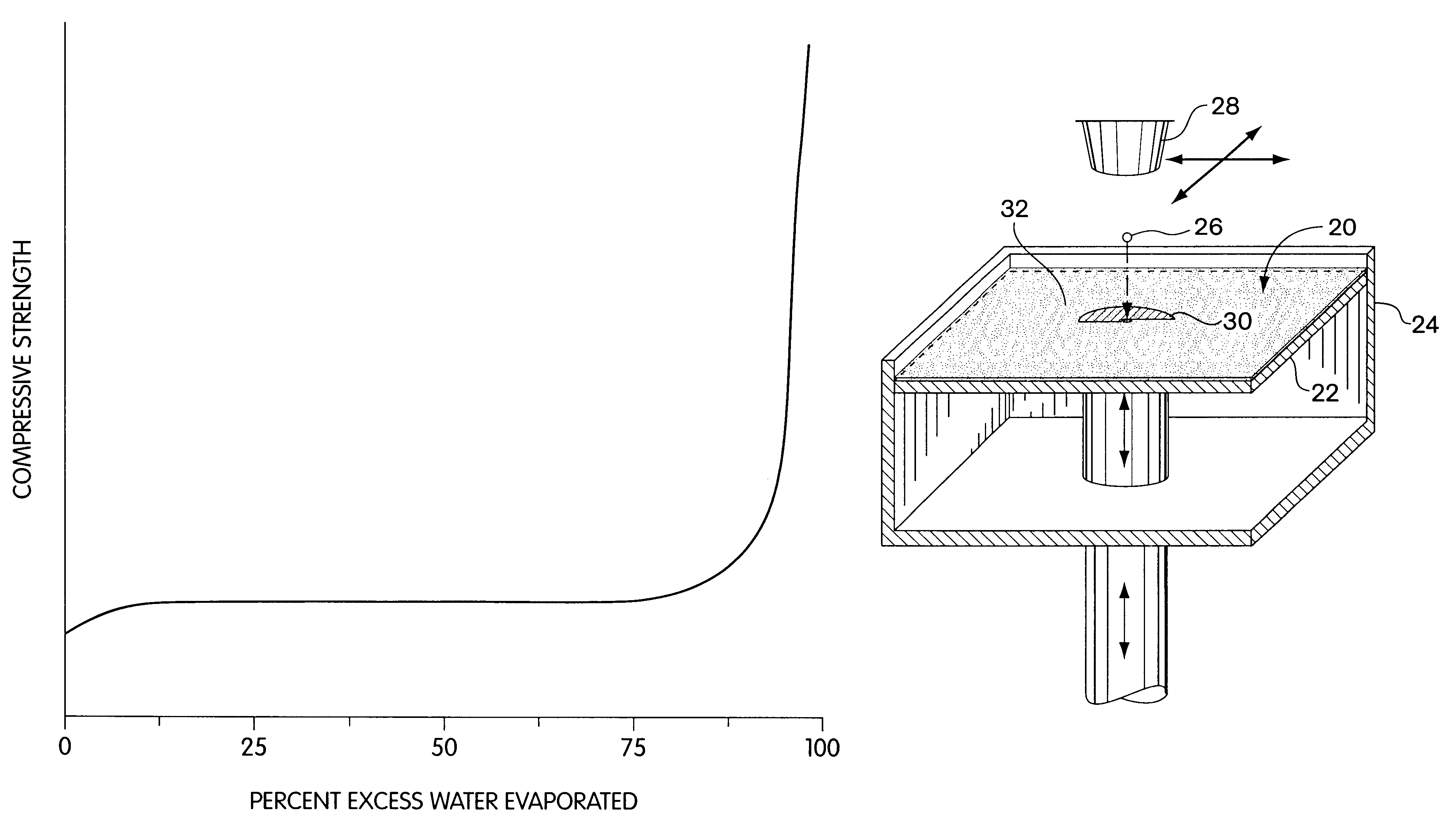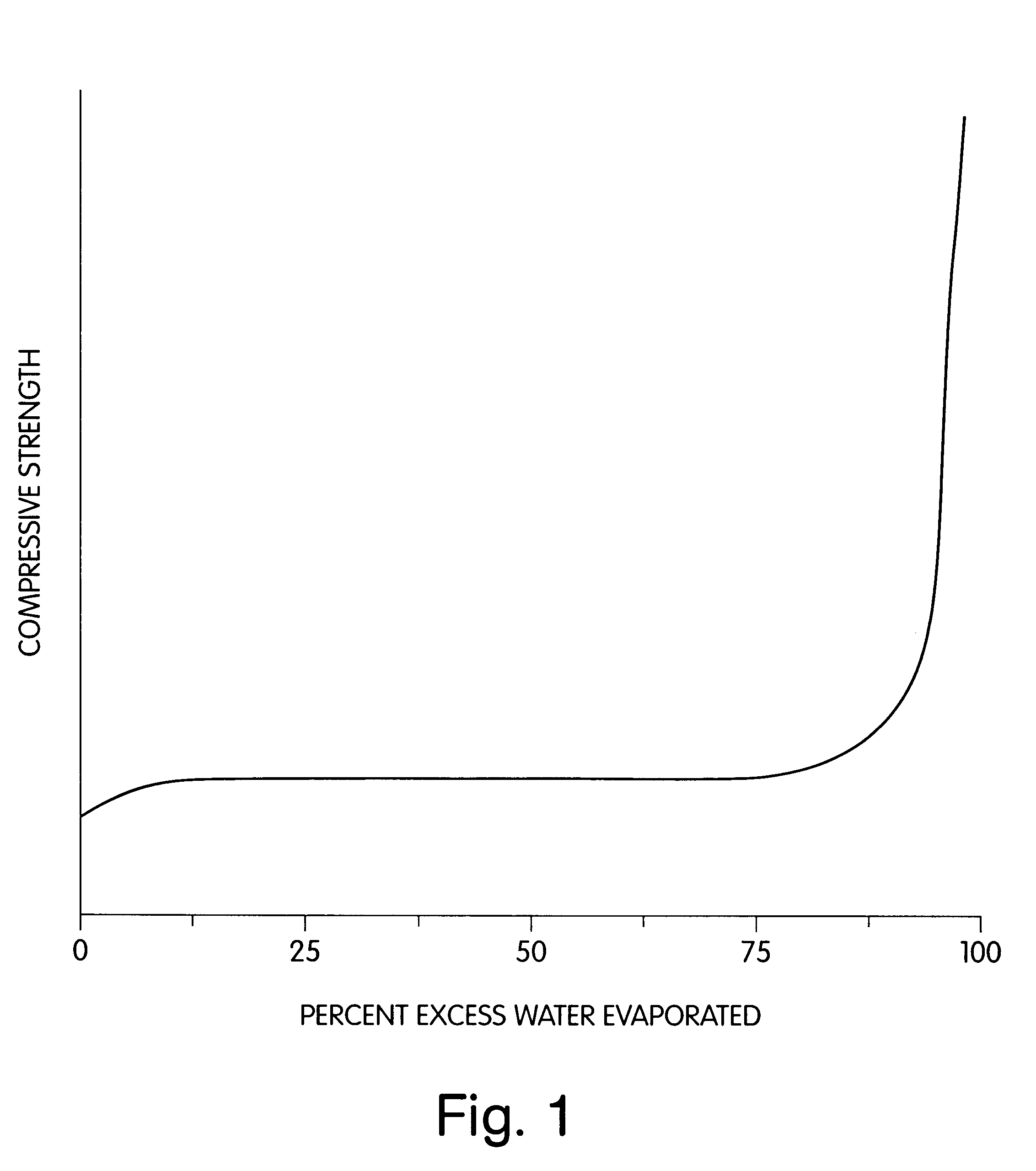Three dimensional printing material system and method
a three-dimensional printing and material technology, applied in the direction of solid and fluid additive manufacturing, solid waste management, water setting substance layered products, etc., can solve the problems of high cost of selective laser sintering process, slow method, and low cost of binder printing equipment, so as to improve the strength and toughness of the final article, improve the viscosity of the aqueous fluid, and improve the effect of toughness
- Summary
- Abstract
- Description
- Claims
- Application Information
AI Technical Summary
Benefits of technology
Problems solved by technology
Method used
Image
Examples
examples 1-3
Several materials were screened as described above, and used to form break bars. The results of the break bar tests are shown below in Table 1. Four different types of plaster or particulate material were used. The aqueous fluid used in the first example included about 95% water and about 5% of a humectant, glycerol. An accelerator was added to the aqueous fluid used in the example, which included about 92% water, about 5% glycerol, and about 3% of the accelerator, potassium sulfate. In most instances, the addition of an aqueous fluid improved the flexural strength of the materials, as illustrated by a comparison of the flexural strength measurements from the first and second examples.
The aqueous fluid used in the third example was the same as that used in the second example. An accelerator, Terra Alba, was added to the set plaster having the highest flexural strength from the first and second examples. The addition of an accelerator to the plaster approximately doubled the flexural...
examples 4-6
The following experiments show the formation of parts by aqueous fluid activation of the particulate material of the present invention, and the results of adding various accelerators and / or adhesives, as well as other processing aids, to either the particulate material or to the aqueous fluid. Example 4 illustrates the effect of adding an accelerator to the material system of the present invention. Examples 5 and 6 illustrate the effect of adding an adhesive to the material system of the present invention.
In Examples 4-6, break bars were formed by spreading successive layers of particulate material, to which successive applications of an aqueous fluid were made, until the thickness of the part reached about 6 mm. The break bar was allowed to set, and the flexural strength of the material was determined, in megapascals (MPa), by breaking the bar with a testing device. The warpage was also determined by measuring the amount of "arching" per two (2) inches of the break bar.
A second tes...
example 4
One kilogram of particulate material was prepared using the materials and ratios shown below in Table 2. The adhesives were sieved through a 170 mesh screen into a bucket, prior to mixing together by hand with the plaster and accelerator. After hand mixing with the plaster and accelerator, the mixture was placed in a Waring Model 34BL22 Commercial Blender with a two (2) gallon mixing vessel and blended on "high" for about 30 seconds. The resulting blended mixture was then sieved through a 50 mesh screen to remove clumps.
About 2 liters of the aqueous fluid were prepared using the amounts shown in Table 3 below.
A break bar and two (2) depowdering bars, were formed from the particulate mixture and an aqueous fluid. The break bar strength was about 18.5 MPa. The break bar had a warping distortion of 0.001", and the edges were curled. The depowdering bars were printed with layers having a thickness of about 3 mil, at a ratio of about 47% aqueous fluid to powder, by volume. Loose powder w...
PUM
| Property | Measurement | Unit |
|---|---|---|
| thickness | aaaaa | aaaaa |
| thickness | aaaaa | aaaaa |
| thickness | aaaaa | aaaaa |
Abstract
Description
Claims
Application Information
 Login to View More
Login to View More - R&D
- Intellectual Property
- Life Sciences
- Materials
- Tech Scout
- Unparalleled Data Quality
- Higher Quality Content
- 60% Fewer Hallucinations
Browse by: Latest US Patents, China's latest patents, Technical Efficacy Thesaurus, Application Domain, Technology Topic, Popular Technical Reports.
© 2025 PatSnap. All rights reserved.Legal|Privacy policy|Modern Slavery Act Transparency Statement|Sitemap|About US| Contact US: help@patsnap.com



